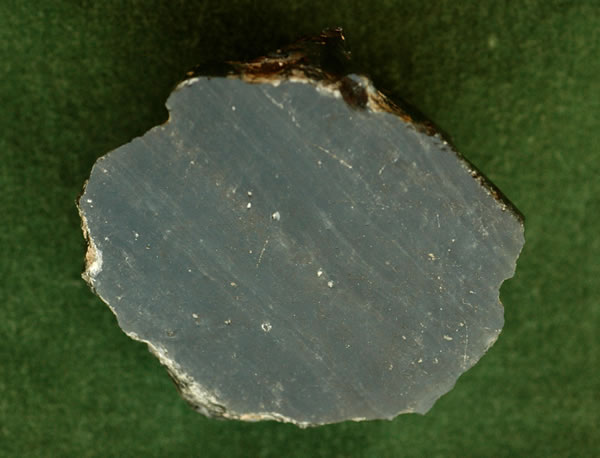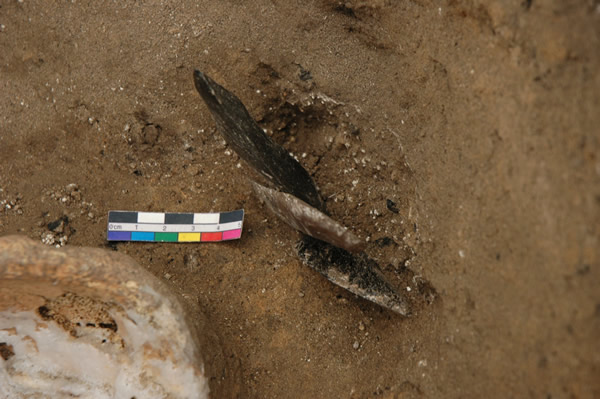FINDS - Chipped Stone
The 2004 season represented a brave new world for the chipped stone team. First and foremost our publication team is largely a new one, with T. Carter now being joined by Sarah Delerue (University of Bordeaux / CNRS), and Marina Milić (Belgrade University), while Martin Wąs now joins us from the University of Gdańsk to work with on the material excavated by Team Poznań. Second, with the opening up of the 4040 Area, we are now confronted for the first time since the 1960s with significant quantities of material from Çatalhöyük's upper levels, with its distinctive dominant prismatic blade industries, a stark contrast to what most of us have been used to working with at the site up to 1999. In the five weeks during which our team was working at the site, our primary responsibility was to process all new finds and generate rapid feedback to the excavators in the context of the priority tour system. In turn, however, we took the opportunity to critically reappraise our recording system (in the light of past experiences, not least the preparation of the forthcoming volume, and the radically different material that was now being studied), leading to a major overhaul of the procedure that should produce a solid basis for our work over the forthcoming years.
Figure 42. The single most noteworthy obsidian object from Space 226 unfortunately came from the fill of a Byzantine grave that had been cut into a Neolithic midden, namely an obsidian mirror, the first to be discovered at Çatalhöyük since the 1960s. The mirror is approximately 4cm in diameter and 2cm thick (thus making it one of the smallest examples discovered thus far), with its reflective surface produced by a single flat flake scar. It does not appear to have been completed as the surface still retains some of the manufacturing striae from abrasion that ultimately would have been removed by finer-grained polishing.
Figure 43. One of the most significant set of finds came from a burial in Building 42, with three large and distinctive implements that had been placed vertically to the right of an adult male's hip in the shape of a fan. This quite remarkable burial assemblage comprised: a long and complete obsidian prismatic blade; the second piece, was in the form of a large end-scraper made on a long blade of tan/pink limnoquartzite backed on both edges. It also has a small amount of sickle gloss on upper left margin and the central ridge of the blade also seems highly polished; the third implement was a large obsidian side-scraper made on a flat quarry flake. In terms of the assemblage's structure and its specific layout – the vertical fan shape – we have found nothing like this before at the site, though one is reminded of the large Byblos point placed vertically behind the plastered skull of a PPNB burial at Kfar HaHoresh in the southern Levant (N. Goring-Morris pers. comm.; Goring-Morris 1994, 432; Goring-Morris et al 1995, fig. 11,8). In turn one recalls the fact that Building 42 also produced its own plastered skull. |

